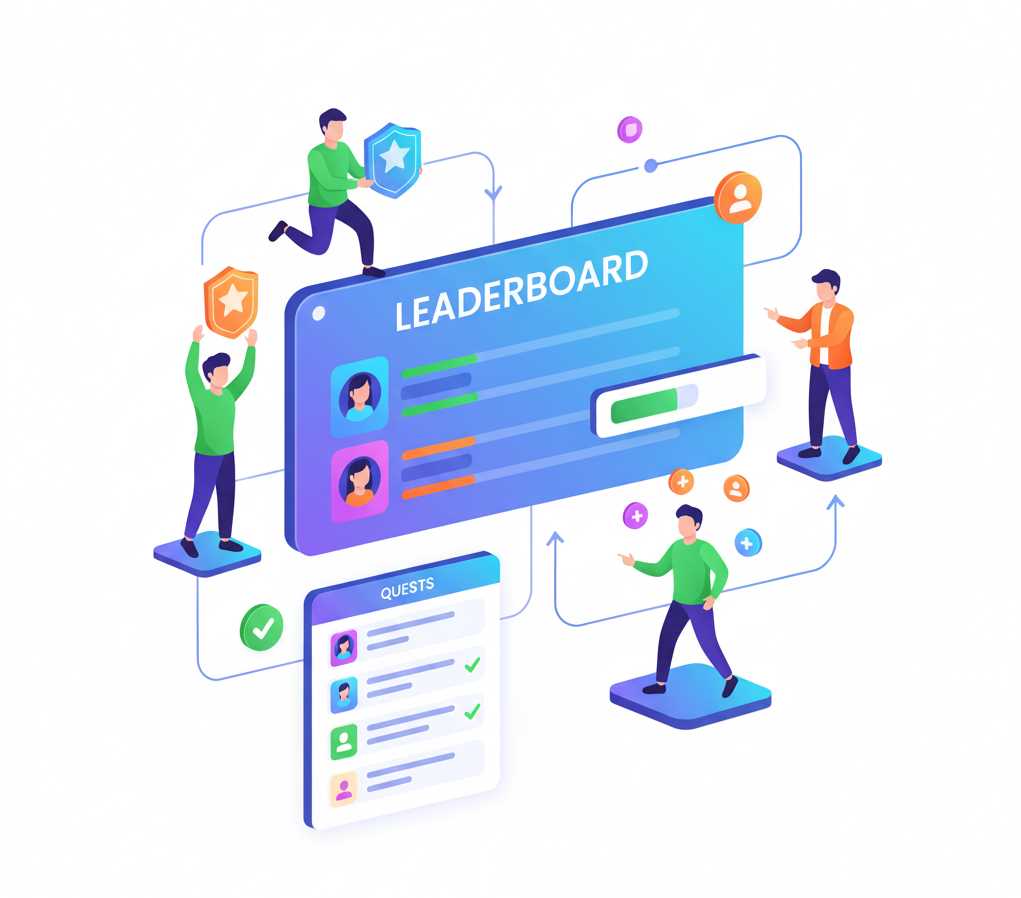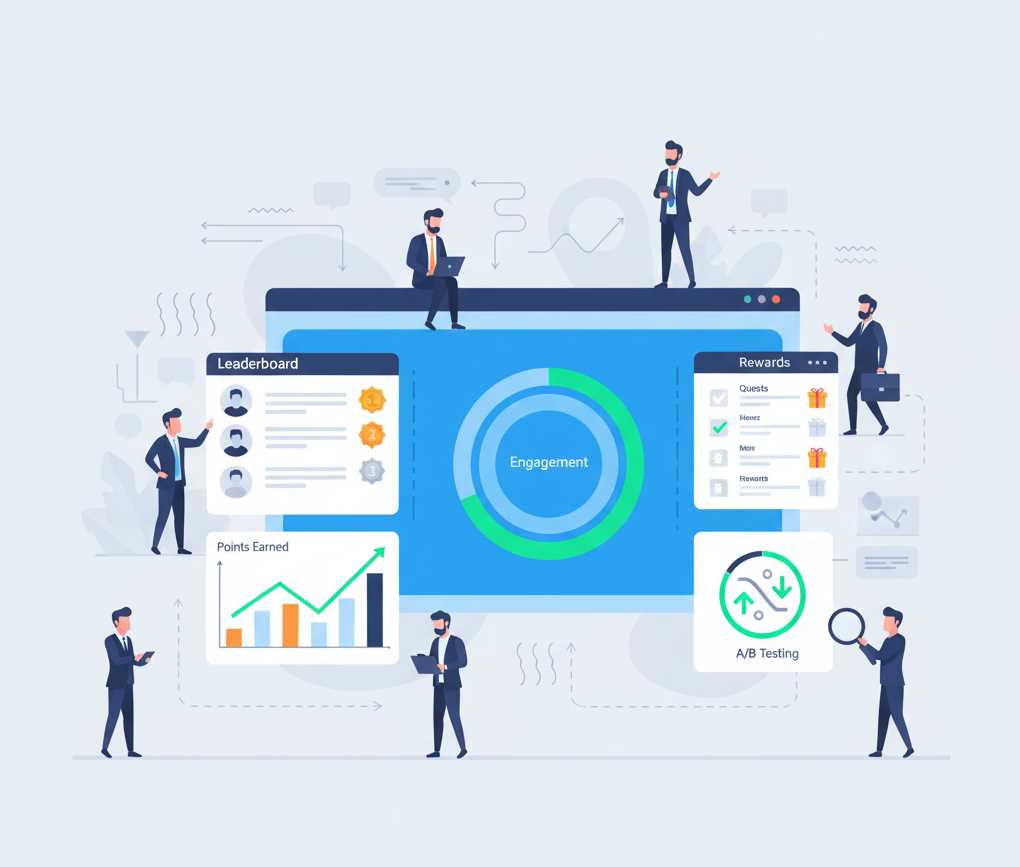Gamify Your Referral Marketing: How to Use Game Mechanics to Boost Customer Engagement and Referrals
Referral marketing thrives on enthusiasm and personal connection. But what if you could amplify that excitement by tapping into game psychology? Gamification combines the elements we love about games—competition, rewards, and achievement—with structured referral programs to motivate customers to share, engage, and drive sustainable growth. In this post, you’ll learn why gamification works, which game mechanics to implement, and how to design a referral program that feels fun, rewarding, and uniquely aligned with your brand’s identity.
Why Gamification Works
At its core, gamification leverages human psychology and behavioral economics. It taps into intrinsic motivators such as achievement, social recognition, and the thrill of competition. When you provide a clear goal—a referral target, reward milestones, or leaderboard ranking—customers feel a sense of purpose. Instant feedback, such as points or badges, offers ongoing reinforcement and satisfaction. Additionally, social elements like public leaderboards or sharing achievements encourage friendly competition and community building. By embedding these game mechanics within your referral program, you transform mundane tasks like sending referral links into engaging experiences that resonate with users on an emotional level.
Key Game Mechanics for Referral Programs

Not all game mechanics suit every brand. The most effective ones for referral marketing include:
- Points and Scoring: Award points for actions like each successful referral, social share, or product review. Points are straightforward, scalable, and act as a currency that customers can accumulate toward rewards.
- Badges and Achievements: Create badges for milestones—first referral, five successful referrals, or ambassador status. These digital trophies provide recognition and a lasting symbol of status within your community.
- Leaderboards: Display top referrers publicly or within private user dashboards. Leaderboards spark healthy competition and motivate customers to climb the rankings for social recognition.
- Progress Bars and Levels: Visual progress indicators show users how close they are to the next reward tier. Levels create long-term engagement by unlocking new benefits as customers advance.
- Challenges and Quests: Offer time-bound or themed tasks, such as referring three friends during a product launch week. Quests add variety, urgency, and a sense of adventure to your program.
By combining these mechanics thoughtfully, you can craft a layered and dynamic referral experience that keeps customers coming back for more.
How to Design a Gamified Referral Program
Local businesses can particularly benefit from gamification by creating engaging, community-driven referral experiences. When designing gamified referral initiatives, consider the specific interests and behaviors of your neighborhood audience. Tailoring mechanics such as points, badges, and local-themed challenges can make your program more relatable and exciting. This approach is especially effective for referral programs for local businesses, where personal connections and word-of-mouth are strong drivers of customer acquisition.
- Set Clear Objectives: Define what you want to achieve—acquire new customers, increase product adoption, or boost brand advocacy. Each objective should map to specific game mechanics and reward structures.
- Choose Resonant Rewards: Select incentives that align with your audience’s interests and your brand values. Consider tiered rewards such as discounts, exclusive content, early access, or charitable donations on their behalf.
- Balance Challenge and Accessibility: Ensure tasks are engaging but not overwhelming. Provide low-effort entry points alongside long-term goals to cater to both casual and highly motivated users.
- Integrate Seamlessly: Embed gamification elements into the user journey—website dashboards, mobile apps, or email notifications. Consistency across touchpoints maintains momentum and reduces friction.
- Personalize Experiences: Use data from your CRM or referral software to tailor challenges, reward tiers, and communications based on user behavior and preferences.
- Launch and Promote: Introduce your gamified program with a kickoff campaign. Use email, social media, and in-app messages to highlight mechanics, showcase top referrers, and explain rewards.
Best Practices for Sustained Engagement
- Keep It Simple: Avoid overly complex rules. A straightforward point system or a single leaderboard can be more effective than layered mechanics no one understands.
- Communicate Progress: Send regular updates on point balances, rank changes, and upcoming challenges to maintain excitement and visibility.
- Leverage Social Sharing: Encourage users to broadcast achievements on social platforms. Built-in share buttons and auto-generated graphics increase reach and credibility.
- Offer Tiered Rewards: Provide increasingly valuable incentives as users reach higher levels. Tiered structures sustain long-term motivation and encourage repeat engagement.
- Ensure Fairness and Transparency: Clearly communicate rules, eligibility, and reward fulfillment. Transparency builds trust and prevents disputes or perceived favoritism.
Case Studies: Real-World Examples
1. SaaS Company Builds a Points-Driven Referral Hub
A project management platform introduced a points system where each successful referral earned 100 points. Users could redeem points for premium features, branded merchandise, or donations to partner charities. Within three months, referral volume increased by 45 percent, and the program generated over 1,200 new trial sign-ups.
2. E-Commerce Brand Launches Seasonal Quests
An outdoor gear retailer ran a summer campaign with weekly referral quests—refer two friends in 7 days, earn a collectible badge, and unlock a 10 percent discount code. The seasonal emphasis and time-bound structure drove a 60 percent lift in referral activity compared to the previous quarter.
Measuring Success and Iterating

To ensure your gamified referral program delivers ROI, track key metrics and continually optimize:
- Referral Rate: Percentage of customers who refer at least one friend.
- Conversion Rate: Proportion of referrals who become paying customers.
- Engagement Metrics: Average points earned, badges unlocked, and quests completed per user.
- Viral Coefficient: Number of new customers gained per existing user through referrals.
Use A/B testing to compare different game elements—vary point values, badge designs, or leaderboard visibility. Solicit user feedback through surveys or in-app prompts to understand pain points and motivation drivers. Then refine your mechanics, communication cadence, and reward offerings to maximize engagement and referral volume.
Conclusion
Gamification brings a fresh, dynamic layer to traditional referral marketing by tapping into human desires for achievement, recognition, and friendly competition. By thoughtfully integrating points, badges, leaderboards, and quests, you can transform your referral program into an engaging journey that delights customers and drives sustainable growth. Start small, measure results, and iterate continuously to build a gamified experience that resonates with your audience and elevates your brand’s referral performance.
Learn more about: How to Choose the Right Marketing Channels for Your Business










